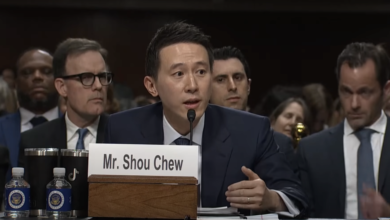On March 1, a U.S./NATO helicopter gunship killed two Afghan brothers, seven and eight years of age, as they tended cattle in Uruzgan province. According to reports from residents, the boys were listening to a radio, which the helicopter crew interpreted as “radio signals” from Afghan resistance fighters.
The latest killing comes amidst a series of atrocities against civilians that has further enflamed opposition to the ongoing occupation.
On. Feb. 24, Hamid Karzai, the U.S.-installed “president” of Afghanistan, announced that he was demanding the withdrawal of all U.S. Special Forces troops from Wardak province within two weeks. Wardak is a key strategic region and an area of active resistance to the U.S./NATO occupation.
Will NATO commanders pay any more attention to Karzai’s latest “order” than the many earlier ones that NATO forces ignored and Karzai quietly dropped? Not likely.
What prompted Karzai’s latest proclamation was explained in a statement from his office, which read in part: “After a thorough discussion, it became clear that armed individuals named as US special force[s] stationed in Wardak province engage in harassing, annoying, torturing and even murdering innocent people.
“A recent example in the province is an incident in which nine people were disappeared in an operation by this suspicious force and in a separate incident a student was taken away at night from his home, whose tortured body with throat cut was found two days later under a bridge.”
While U.S. commanders predictably denied the accusations, the level of popular anger in Wardak was made clear by street protests and threats by civilian groups to join the armed resistance if U.S. forces were not withdrawn.
On Feb. 26, 500 people marched in protest of the killings. “If the situation remains like this, this province will collapse very soon,” protester Haji Abdul Qadim told the Reuters news service. “People will join the insurgency very soon because of the abuses of these forces.”
In another recent incident brought to international attention on Feb. 26, a Swedish organization that operates health clinics in Afghanistan said that U.S. military forces occupied and damaged one of their clinics in Wardak on Feb. 11.
The Swedish Committee for Afghanistan said in a statement: “Foreign soldiers entered the health facility by force, tied up and blindfolded the guard on duty, and occupied the facility.”
Andreas Stefansson, director of SCA, said that it was the second time one of SCA’s clinics had been occupied by NATO troops. The previous occupation lasted three days. Stefansson said that NATO has promised that such an occupation would not happen again.
“What we are seeking is that they actually live up to what they say,” Stefansson said. (Reuters, Feb. 26)
On Feb. 13, 10 people, including women and children, were killed in a NATO air strike in Kunar province. On June 6, 2012, 18 civilians were killed in a strike in Logar province. The grisly list of “accidental” killings stretches back a decade.
A ‘president’ in name only
These atrocities and the daily abuses that inevitably accompany imperialist occupation are the source of burning anger among the Afghan people. In the eyes of the population, Karzai shares blame with the occupiers for these outrages. Thus, Karzai’s repeated “orders” forbidding Afghan army units from calling in U.S./NATO air support and for U.S. troops to withdraw from Wardak and stop the hated “night raids” on people’s homes.
But his proclamations continue to be disregarded by the occupation forces, exposing the actual power relationship in the country. In reality, the lowest level U.S. commander has greater military authority than does the “president” of the country.
Further illuminating both this relationship and the U.S. intention to maintain a dominant role in Afghanistan was a Feb. 3 joint interview with then-Secretary of Defense Leon E. Panetta and chairman of the Joint Chiefs of Staff General Martin Dempsey. Panetta and Dempsey reaffirmed that the United States would sustain a “strategic partnership” with Afghanistan, citing a decision by the NATO heads of state during a 2012 summit meeting in Chicago to maintain a long-term presence in the country despite a drawdown in the number of U.S. ground troops in the country.
“We’re committing to an enduring presence,” Mr. Panetta said on Feb. 3.
“Strategic partnership” and “enduring presence” are more Washington weasel words for continuing colonial domination over Afghanistan.
On Feb. 26, it was revealed that claims of resistance attacks inside the country declining by 7 percent in 2012 were just one more Pentagon lie. The 7 percent figure was posted on the International Security Assistance Force (the official name of the U.S./NATO force in Afghanistan) website in January, to bolster the administration’s “positive track” line about the war.
When the Associated Press made inquiries about the statistics, NATO officials in Kabul immediately backtracked, stated that they had “erred,” and admitted that in fact, there was no decline at all.
Costs of war
Eleven and a half years of U.S./NATO war and occupation have been a disaster for all but a tiny sliver of the Afghan population.
Despite tens of billions of dollars in U.S.-funded “reconstruction aid,” Afghanistan remains one of the very poorest countries on the face of the Earth. The total U.S. budget for the Afghanistan war is over $640 billion and counting. (Center for Strategic and International Studies)
While U.S. and other NATO-country contractors, and elements of the Afghan elite, have become incredibly rich from this “aid,” the Afghan government presently spends a miniscule $46 per year on health care per person. (GlobalHealthFacts.org)
Afghanistan ranks as the worst country in the world for infant mortality, with a shocking 122 infant deaths per 1,000 live births. (CIA World Factbook 2013) By way of comparison, the infant mortality rate is 6 per 1,000 in the U.S. and 4.8 per 1,000 in Cuba. Life expectancy is just 49 years. Afghanistan is listed as 172nd out of 187 countries in the Human Development Index, with the average adult having 3.3 years of schooling.
In addition to the tens of thousands killed and hundreds of thousands wounded in the war, more than 2.7 million Afghans remain external refugees, most in Pakistan and Iran, and 425,000 are internally displaced. (United Nations High Commissioner for Refugees 2012
No amount of lying Pentagon propaganda can hide the reality that the war has been an unmitigated disaster for the Afghan people and for the thousands of dead and tens of thousands of maimed troops sent to kill and die there in the interests of empire.





